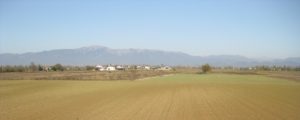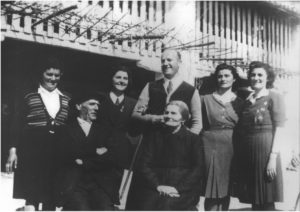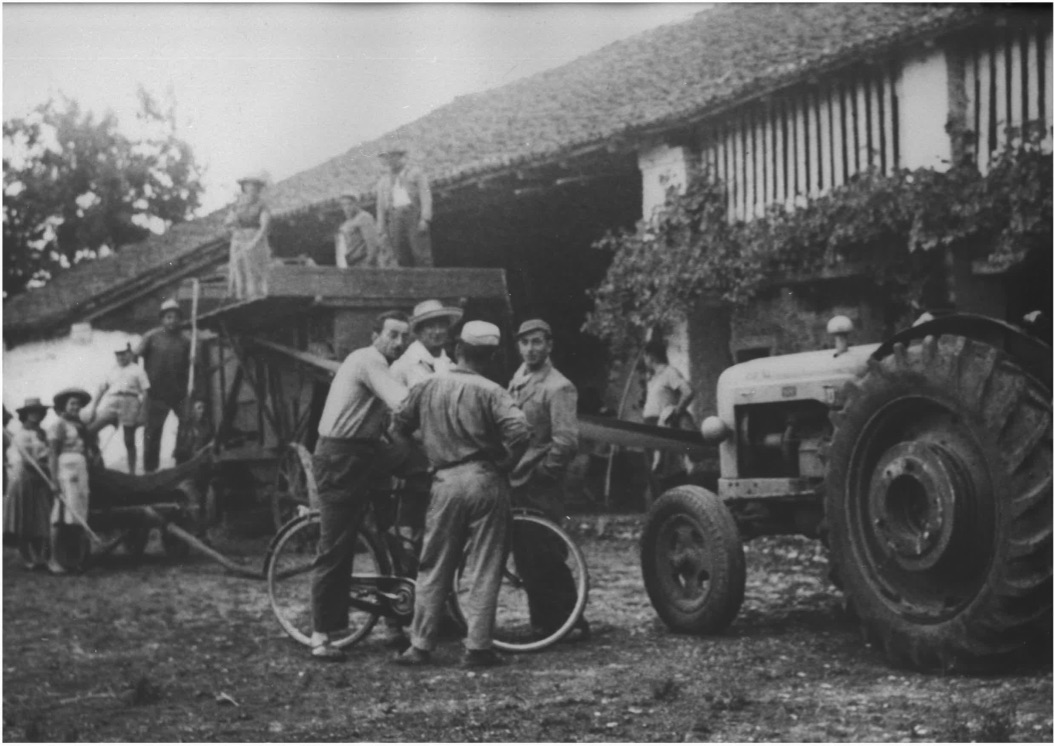The word, mezzadria is derived from Latin and means “he who divides in half”. The mezzadria was an agrarian contract made between the proprietor (padrone) of land and the labourer or peasant worker (also called the mezzadro) who worked the land. The produce of the farm unit including crops, olive oil, vegetables, livestock and chickens were divided in half. The proprietor had the authority over all aspects of the farm. The system expanded in the Middle Ages in various parts of Europe as a feudal structure. In Italy it was particularly common in the regions of Emilia-Romagna, Veneto, Marche, Toscana and Umbria.

In the Veneto region and in the Po Valley in the first years of the 20th century, the mezzadria or sharecropping system was widespread and was regulated by legislation. Changes began to influence the existence of the mezzadria. Economic conditions in the centre and north of Italy began improving in the 1950s and into the 1960s. Legislation in 1964 prohibited drafting of new mezzadria contracts. In 1982 new legislation enabled the conversion of residual sharecropping contracts into rental agreements for farmers who had previously been labourers for the proprietors.
The family household was often comprised of many people maybe up to 20 or 30 people: grandparents, parents and grandchildren. In a family there were usually between five and 12 children. It is understandable that the family of the mezzadro lived a subsistence life having to feed so many mouths with only half of the production of the farm.

Standing: Maria, Rosetta, Bepi, Antonietta, Amelia
The proprietor of the farm was guaranteed a constant income without a large investment by exploiting the labour of the landless mezzadri. Consequently, the mezzadria system thrived where there was a need for labour with little agricultural means. The introduction of new entrepreneurial agricultural methods and use of agricultural machinery changed the old ways and lawmakers were forced to abolish this archaic contract system.

In 2017 I interviewed Remo Berno in the Veneto region in Italy and asked him to explain the mezzadria system. Remo said that he had been fortunate to have conversations with his uncle Nino who had been born in 1908 and lived in the large family household on the farm near Riese Pio X.
… there were many landlords and many of them were very strict as the one where my grandfather and my mother used to live. — They shared, the rent was paid, on … exactly half of the crop and half of the produce, say — produce means also like the — poultry, the eggs, whatever was produced, half belonged to the landlord and half to the mezzadro …
And my Uncle, my mother’s eldest brother, my zio Nino, he used to say, he was very strict. He always would choose the fattest hen, he would always choose the best, when they split, you know, he would choose the best calf that was born … He could remember that was how poor they were, I mean, and probably that was one of the things that probably sparked off the migration because there was very little there and they had to live on what they produced, that was it. There was a lot of barter, very little money going around because you know, it was just a matter — they’d barter the wheat for flour … Once they used to trade, you know, everything, whatever it was beef, poultry or whatever was to be sold. But a lot of it was sold also on a barter system. “I can give you this and you give me that.” (Remo Berno, interview 27 June 2017)
Blog: Remo Berno & Madeleine Regan
15 September 2019
La mezzadria
La parola “mezzadria” deriva dal latino che indica “colui che divide a metà”. È un contratto agrario di associazione con il quale il proprietario di terreni e un coltivatore (detto anche mezzadro) si dividono (normalmente a metà) i prodotti, sia agricoli che zootecnici, e gli utili di una azienda agricola (o podere). Il comando dell’azienda spetta al proprietario.
A partire dal Medioevo in varie parti di Europa si diffonde la mezzadria, come rapporto produttivo inquadrato nel sistema feudale. In Italia fu particolarmente importante nelle regioni Emilia-Romagna, Veneto, Marche, Toscana e Umbria.

Quindi anche nel Veneto e nella pianura Padana dei primi anni del ventesimo secolo la mezzadria era un sistema contrattuale molto diffuso. Nel Diritto Italiano la mezzadria viene regolata con gli articoli 2141 e susseguenti del Codice Civile. Con il cambiamento del clima economico nettamente migliore (specialmente nel Centro e Nord Italia alla fine degli anni 50 ed inizio degli anni 60), la legge italiana N. 756 del 15 settembre 1964, vieta però la stipulazione di nuovi contratti di mezzadria a far data dal 23 settembre 1974. La legge italiana N. 203 del 3 maggio 1982 prevede la conversione dei contratti di mezzadria ancora in essere in contratti di affitto a coltivatore diretto.

Seduto: Angelo & Elisabetta
A piedi: Maria, Rosetta, Bepi, Antonietta, Amelia
(Cortesia la famiglia Berno)
Il mezzadro rappresentava anche la sua intera famiglia (detta famiglia colonica). Spesso queste famiglie erano molto numerose: una copia anziana – i nonni, i figli spesso numerosi (da 5 a 12 figli per famiglia) e magari anche con sposi dei figli e i nipoti. Era frequente che un mezzadro potesse avere una famiglia colonica anche di 20 o 30 persone. Da questo si può ben capire che in molte situazioni di mezzadria la famiglia del mezzadro viveva a livello di misera sussistenza, potendo offrire alle molte bocche da sfamare solo la metà di ciò che il podere poteva offrire.
Al proprietario del podere la mezzadria garantiva una congrua rendita senza bisogno di grandi investimenti. Per questo la mezzadria prosperava dove c’era bisogno di tanta manodopera con pochi mezzi agricoli. Con l’introduzione di nuovi metodi imprenditoriali nell’agricoltura e con la diffusione delle macchine agricole, il sistema di mezzadria mostrava tutta la sua arretratezza e i legislatori furono spinti a abolire questo contratto arcaico.

Nel 2017 ho intervistato Remo Berno che vive in Veneto chiedendo informazioni in merito. Remo mi parlava di conversazioni con il suo Zio Nino che nacque nel 2008, primogenito della famiglia di Angelo Pastro mezzadro e nonno di Remo. Con questi racconti e con quelli degli altri fratelli e sorelle di Nino, tra cui sua madre Antonietta, Remo aveva memorie di come viveva la famiglia di suo nonno nella casa rurale in Riese Pio X.
……….. a Riese c’erano diversi proprietari di terreni e molti di questi erano molto severi, come il proprietario del podere dove vivevano i miei nonni con la loro famiglia, e tra questi mia madre Antonietta. Era una famiglia mezzadra e l’affitto si pagava con metà di quello che il podere produceva. La produzione dei campi (spesso mais o frumento) e gli animali domestici erano divisi a metà tra il proprietario ed il mezzadro. Mio zio Nino il fratello maggiore di mamma, mi raccontava che il proprietario era molto severo. Quando toccava la divisione della produzione del podere, il proprietario sceglieva sempre i prodotti migliori, il vitello più grasso o la gallina più grassa. .. Parlava di come era povera la sua famiglia, uno stato economico molto diffuso i quella regione ed è probabile che questo era una dei motivi della grande emigrazione verso i paesi nuovi e prosperosi di molti Veneti in quel periodo. All’epoca in queste famiglie povere c’era molto poco denaro a disposizione, e spesso si pagava con il sistema della permuta. Quindi si permutava il frumento per avere la farina. Quello che si doveva vendere al mercato spesso veniva permutato – io ti do questa gallina e tu mi dai quello ….. (Remo Berno, intervista, il27 June 2017)
Blog: Remo Berno
il 15 settembre 2019
